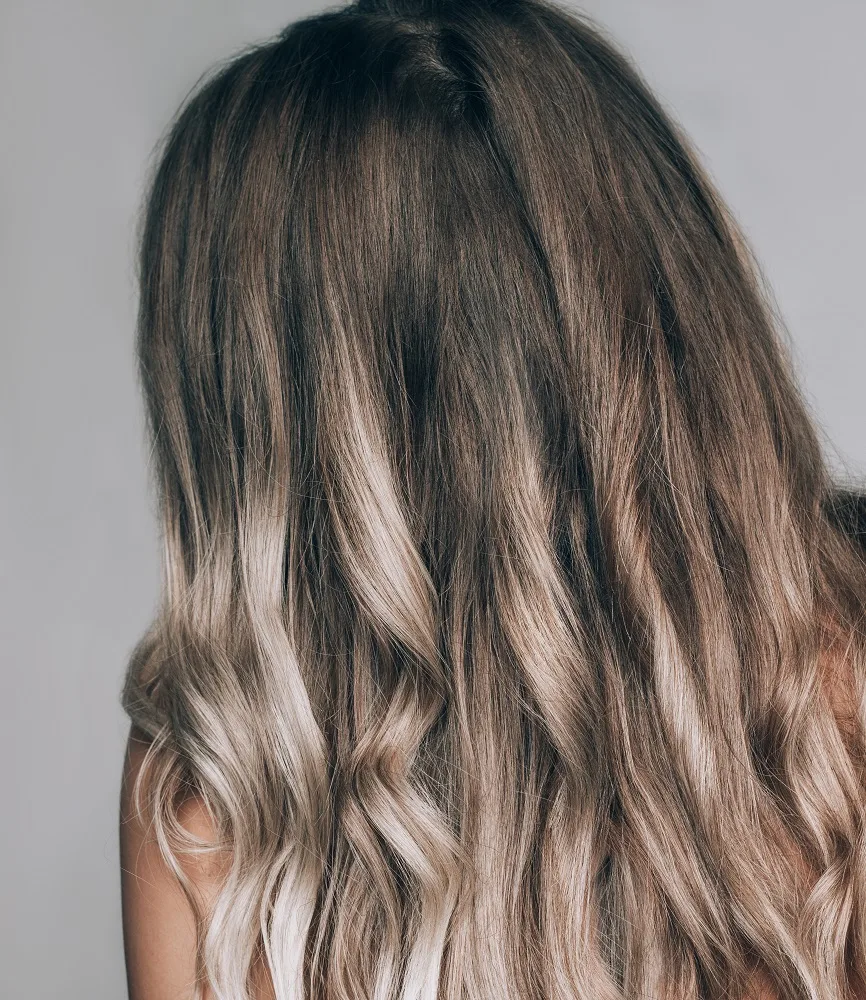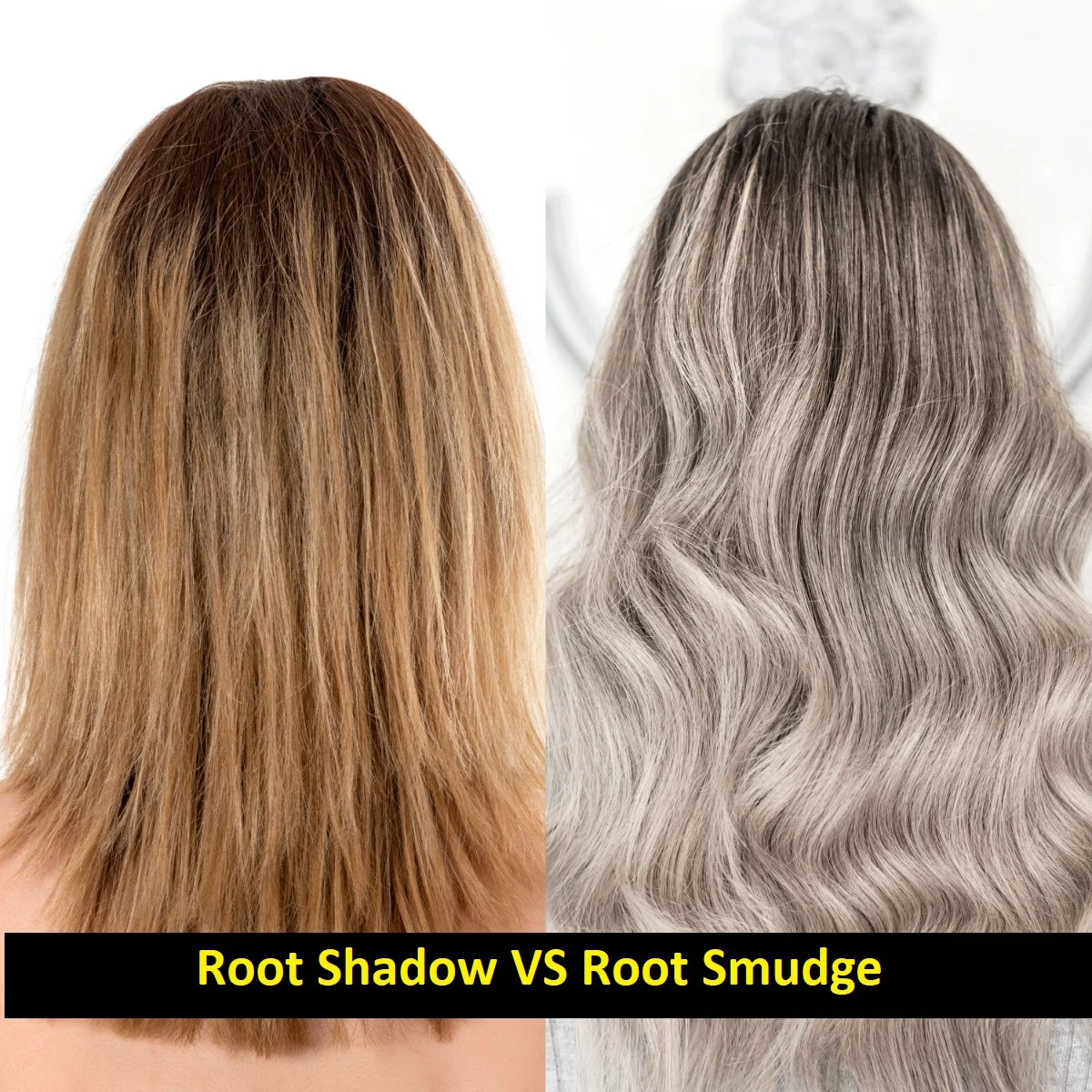Long gone are the days of bold and chunky highlights being the most asked-for hair color in the salon. Blended and natural hair color is here to stay and if you want to be on trend as well as have hair that looks natural and requires less maintenance, it’s crucial you learn about root smudges and shadow roots.
It’s important to know what they are and what the difference between them is. These two techniques are often confused because they sound so similar and the terms are used interchangeably, however, they are different.
Knowing the differences between root smudge and shadow root will be a huge help when describing to your hairstylist what hair color you’re hoping for or when doing your own hair at home.
Root Smudge Vs. Shadow Root: Quick Comparison
Here’s a root smudge vs shadow root comparison table to give you a quick idea about the differences.
| Topic | Root Smudge | Shadow Root |
|---|---|---|
| Definition | A technique to blur the line between highlights and natural hair color by using a toner that is close to or slightly lighter than the natural hair color. | A technique to add depth and dimension to the hair by using a toner that is a shade or two darker than the natural hair color. |
| Toner Shade | Close to natural hair color or a shade lighter. | A shade or two darker than the natural hair color. |
| Application | Applied to damp hair at the root and smudged about an inch down. | Applied to damp hair at the root and applied further than an inch down, especially in areas like the crown and sides. |
| Purpose | Creates a softer, more blended, and lived-in look between the highlights and the natural hair color. | Adds depth and dimension to the hair, and makes the color appear darker and more dramatic. |
| Processing Time | About 15 minutes. | About 20 minutes. |
| Maintenance | Lower maintenance as it allows a softer grow-out, extending the time between salon visits. | Lower maintenance by adding softness and extending time between salon visits, but slightly more maintenance than Root Smudge due to darker tones. |
| Best For | Those looking for a lighter, soft, and natural blend with their highlights. | Those looking for added depth, dimension, and a slightly moodier or darker effect. |
| How it’s blended | Blended about an inch down using a comb or color brush. | Blended further down (more than an inch) from the roots using a comb or color brush. |
| Effect on length of salon visits | Extends time between salon visits by softening the line of demarcation as hair grows. | Increases the time between salon visits by adding softness and depth to the new color. |
The Basics

First, let’s start with the basics of root smudges and shadow roots so all the information we’re about to give makes sense!
Both a root smudge and a shadow root use toner (a toner may also be described as a gloss in some salons). So, what is a toner and why do you need a toner?
What Is a Toner?
A toner is a demi-permanent hair color that neutralizes unwanted tones in the hair (i.e., cancels out brassiness), adds more of a tone into the hair (i.e. more gold, ash, etc), or adds dimension or depth.
Toners are usually applied to damp hair right after a color service and process anywhere from 5-20 minutes, depending on the desired end result. Toners can last anywhere from 2-8 weeks; factors like how much you wash your hair or how dark the toner was affect the toner’s longevity.
Do You Need a Toner?
Yes! Don’t be afraid of toners. In most cases, especially after highlighting the hair, you’re going to need a toner. Toners refine your hair color and make it the perfect shade for you.
A toner is like a top coat for the hair, a very important final step that will make your hair color shinier and last longer. It personalizes your hair color and adds the little details that make hair color look expensive and well done.
What Is a Root Smudge?

To smudge something means to blur, and that is exactly what a root smudge does in your hair. A root smudge is done after a hair lightening service, usually traditional foil highlights or balayage.
A toner the color of your natural hair or a shade lighter is applied to damp hair right at the root and smudged about an inch down using a comb or color brush. The root smudge will process for about 15 minutes and then be rinsed out of the hair.
The root smudge blurs the highlights and your natural hair color, creating a softer, more lived-in look. The root smudge also uses a lighter toner to only slightly deepen roots so much that you can see the dimension from your newly lightened hair.
They also work perfectly to soften the line of demarcation as your hair grows out and allow you to go a bit longer before your next salon visit.
What Is a Shadow Root?

A shadow root is used when you want more depth and dimension than the root smudge can provide. A shadow root is done with a toner that is a shade or two darker than your natural hair color.
They are also applied after a hair lightening service on damp hair at the root, but in this case, the toner will be applied down further than an inch to really give depth, especially in areas like the crown and sides of your hair.
A root shadow processes for about 20 minutes. The shadow root adds softness to your new color and increases the time between salon visits. The main difference from the root smudge is that the shadow root is darker and applied further down on the head.
Root Smudge Vs. Shadow Root: How to Decide Which One Is for You?

When deciding between a root smudge and a shadow root, it comes down to the overall look you want to achieve. If you’re wanting something light and soft, a root smudge is a great choice.
If you’re wanting something a little darker and moodier, then opt for the shadow root. The best thing about these techniques is they are done with demi-permanent color, so you can always try them out at different times or use one for summer and one for fall!
Things to Remember:
- Toners are used to create both a root smudge and a shadow root.
- Toner is a demi-permanent hair color applied after a hair color service and is almost always needed. Do not fear the toner!
- A root smudge is done with a toner close to your natural or lighter.
- A root smudge is only applied one inch down from the root and blended with a color brush or comb.
- A shadow root is about two shades darker than your natural
- A shadow root is applied an inch or further down from the root and also blended with a color brush or comb.
